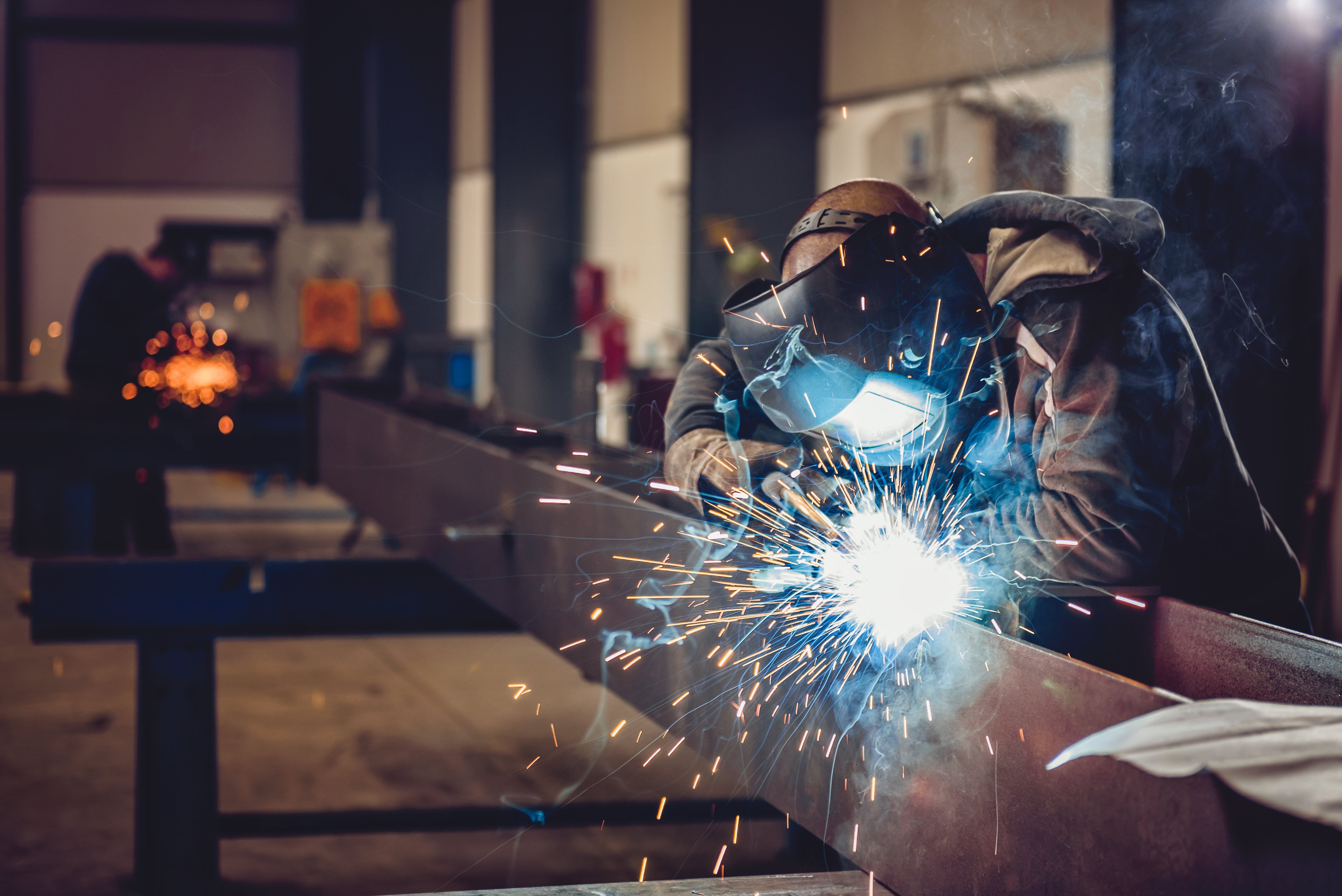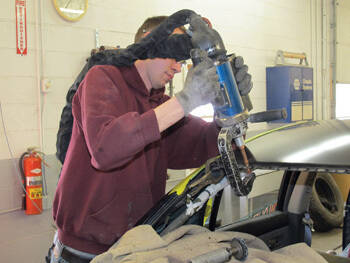Proven steps to avoid porosity in welds with Belgrade Welding
Everything about Welding: Key Insights Into Techniques and Best Practices for Success
Welding incorporates a range of strategies, each fit for particular materials and applications. Recognizing these approaches, such as GMAW, SMAW, and TIG, is vital for achieving perfect results. Moreover, the best tools and safety practices can not be overlooked. As prep work and repairing play important functions in the welding process, understanding these aspects can considerably improve the top quality of the last item. What are the crucial aspects that guarantee a successful weld?
Understanding Different Welding Techniques
Welding strategies encompass a range of methods, each matched to details applications and materials. Amongst one of the most typical techniques are Gas Metal Arc Welding (GMAW), Secured Metal Arc Welding (SMAW), and Tungsten Inert Gas Welding (TIG) GMAW, also recognized as MIG welding, is preferred for its speed and adaptability, making it suitable for thin materials. SMAW, or stick welding, is favored for its simplicity and efficiency in outdoor settings, specifically with thicker metals. TIG welding uses accuracy and control, making it appropriate for intricate work and non-ferrous steels (Montana Mobile Welding and Repair Belgrade Welding). Each strategy has its unique advantages and factors to consider, enabling welders to select the best technique based upon the task's demands, product kind, and desired results. Recognizing these strategies is crucial for effective welding
Essential Welding Tools and Devices
While various welding techniques call for particular abilities, the appropriate devices and devices are equally crucial for achieving high quality outcomes. Vital welding devices consists of welding equipments, which differ depending upon the strategy-- such as MIG, TIG, or stick welding. Safety gear, including helmets, gloves, and aprons, guarantees security and convenience throughout the process. In enhancement, components and clamps aid protect materials in position, making sure precision in welds. Consumables like welding poles, wire, and securing gas are also important elements that affect the top quality of the weld. In addition, devices such as cutters and grinders facilitate surface area prep work and post-weld completing, adding to an expert result. Purchasing top notch devices eventually improves the efficiency and performance of welding jobs.
Safety And Security Practices in Welding
Correct safety techniques are necessary in the welding industry to shield workers from prospective risks. Welders have to use suitable individual safety devices (PPE), including helmets with correct shading, gloves, and flame-resistant clothes. Sufficient air flow is essential to lower exposure to unsafe fumes and gases produced throughout the welding process. Furthermore, employees must be trained in the appropriate handling of welding equipment to stop crashes. Fire precaution, such as maintaining combustible materials away from the welding location and having fire extinguishers conveniently available, are required. Normal assessments of tools and offices can assist identify possible hazards before they lead to accidents. By adhering to these security techniques, welders can develop a more secure working environment and reduce threats connected with their profession.
Readying Products for Welding
Preparing products for welding is a crucial step that significantly influences the top quality and integrity of the final product (Montana Mobile Welding and Repair Belgrade Fabrication). Proper prep work entails cleansing the surfaces to get rid of contaminants such as oil, rust, and dust, which can compromise the weld. Techniques such as grinding, fining sand, or utilizing solvents are generally utilized to accomplish a tidy surface area. Additionally, making certain that the products fit together snugly is essential; voids can cause weak welds. It's likewise crucial to think about the positioning and positioning of the components, as this will affect the convenience of welding and the final result. Lastly, choosing the suitable filler product and making sure compatibility with the base metals is necessary for achieving strong, durable welds
Tips for Getting High-Quality Welds
Attaining premium welds requires interest to detail and adherence to best methods go to my blog throughout the welding procedure. Correct joint prep work is crucial, guaranteeing surface areas are cost-free and clean from contaminants. Picking the suitable filler material and welding technique based upon the base metals is critical for perfect bonding. Keeping consistent traveling speed and angle while welding can prevent problems and advertise uniformity. In addition, managing warm input is important; excessive heat can result in bending and compromised joints. On a regular basis inspecting the welds during the procedure allows for immediate changes if required. Lastly, utilizing appropriate post-weld treatments, such as cleaning and anxiety relief, can improve the sturdiness and stability of the weld, eventually guaranteeing a successful outcome.
Fixing Common Welding Issues
Welding frequently offers obstacles that can influence the top quality and stability of the end product. Typical problems such as porosity, inconsistent weld beads, and getting too hot can arise, each needing specific troubleshooting techniques. Comprehending these issues is vital for welders to boost their abilities and attain optimal results.
Porosity Problems Described
Porosity can usually be forgotten, it continues to be a vital concern in welding that can compromise the stability of a finished product. Porosity describes the presence of little gas pockets within the weld bead, which can damage the joint and lead to premature failing. This problem commonly arises from contaminants, wetness, or incorrect shielding gas insurance coverage during the welding process. To mitigate porosity, welders ought to validate that the base products are clean and completely dry, make use of ideal securing gases, and maintain consistent welding criteria. Frequently examining the devices and atmosphere can likewise assist determine prospective problems before they materialize in the weld. Attending to porosity efficiently is necessary for achieving solid, sturdy welds that satisfy quality criteria.

Inconsistent Weld Beans
Inconsistent weld grains can considerably impact the quality and toughness of an ended up product. Different variables add to this problem, consisting of inappropriate travel speed, incorrect amperage setups, and irregular electrode angles. When the welder relocates also quickly, a grain may show up slim and do not have penetration, while moving too gradually can trigger too much buildup. In addition, utilizing the incorrect amperage can lead to either damaging or too much spatter, both of which concession weld integrity. The welder's strategy, such as inconsistent torch motion, can additionally cause uneven bead appearance. To mitigate these troubles, welders ought to concentrate on maintaining constant, controlled motions and guaranteeing appropriate equipment setups to achieve harmony in their welds. Uniformity is key to achieving solid and trusted welds.
Getting Too Hot and Bending Issues
Too much warmth throughout the welding procedure can result in significant getting too hot and warping concerns, impacting the structural stability of the workpiece. These problems usually show up as distortion, which can endanger positioning and fit-up, making additional assembly challenging. Variables adding to overheating consist of the choice of welding specifications, such as voltage and take a trip speed, in addition to the sort of material being welded. To reduce these concerns, welders should keep constant travel rate and ideal heat input while keeping track of the work surface temperature level. In addition, pre-heating or post-weld warm treatment can aid alleviate stresses created by quick air conditioning - Fabrication. Normal inspection and adherence to ideal methods are necessary why not try these out in stopping overheating and making sure the longevity and reliability of welded frameworks
Frequently Asked Concerns
What Are the Career Opportunities in the Welding Sector?
The welding sector uses diverse profession opportunities, including positions as welders, designers, instructors, and assessors. Experts can operate visit this site in production, building, aerospace, and auto markets, taking advantage of strong need and competitive salaries in different functions.
Just How Can I Improve My Welding Rate Without Sacrificing Quality?
To boost welding rate without sacrificing top quality, one ought to exercise effective methods, keep devices, enhance setups, and boost hand-eye coordination. Normal training and looking for responses can likewise substantially add to accomplishing much faster, high-grade welds.
What Certifications Are Offered for Welders?
Many accreditations exist for welders, consisting of those from the American Welding Society (AWS), the National Center for Construction Education and Research Study (NCCER), and different industry-specific companies. These qualifications improve employability and show skill proficiency.
Just How Does Welding Impact the Features of Metals?
Welding influences the homes of steels by altering their microstructure, which can cause adjustments in strength, ductility, and solidity. Heat input and air conditioning rates during the procedure greatly affect these product features.
Can I Bonded Dissimilar Metals With Each Other?
